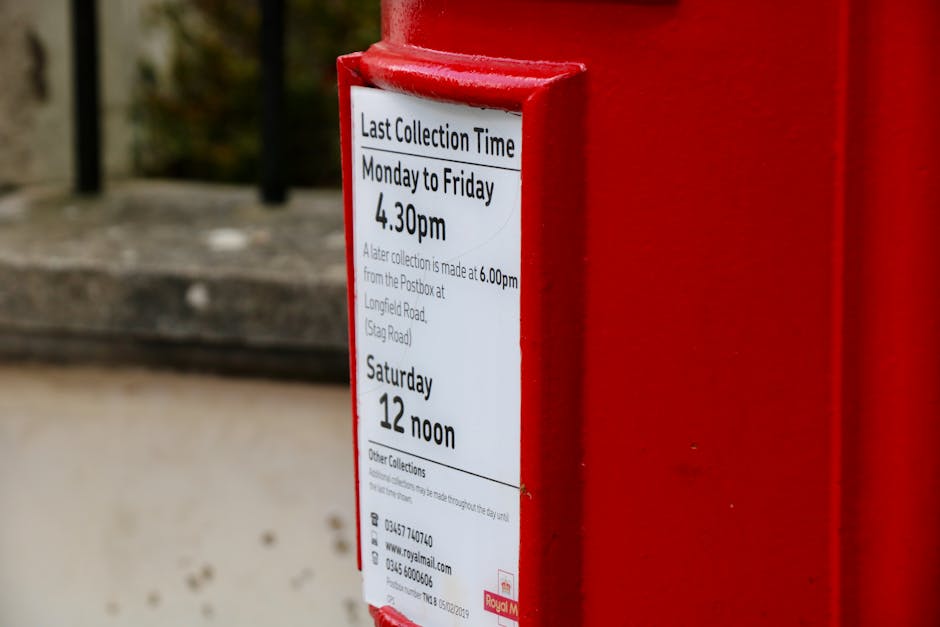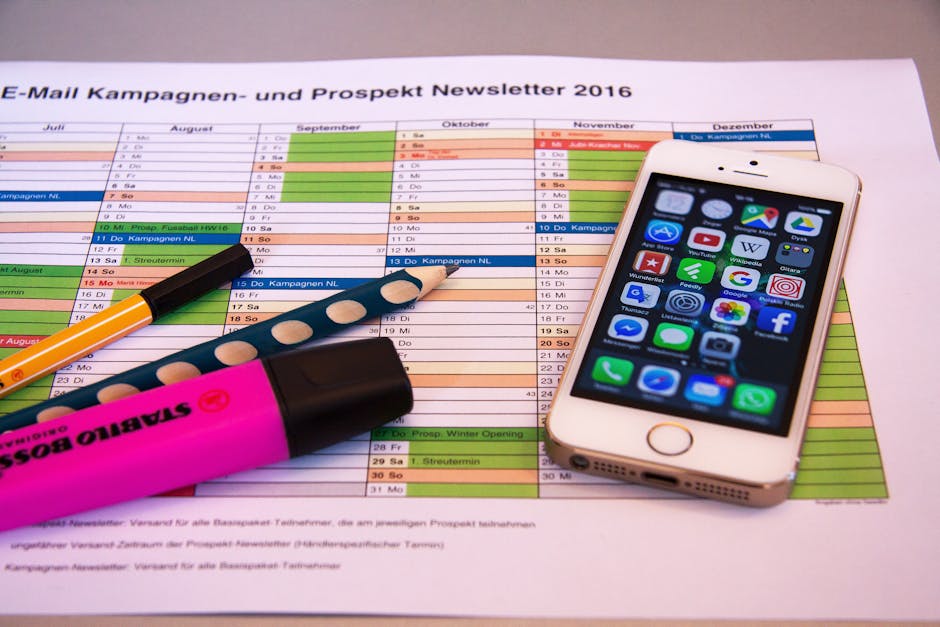Maximize your social media impact by understanding the best times to post. This guide explores optimal posting schedules across different platforms, helping you boost engagement and reach your target audience.
Quick Answer Summary
This comprehensive guide covers essential aspects of best time to post: schedule for engagement, including practical steps, best practices, and expert insights.
Introduction: Why Timing Matters on Social Media
In the fast-paced world of social media, simply creating great content isn't enough. The timing of your posts plays a crucial role in determining how many people see and engage with them. Understanding why timing matters can significantly boost your social media performance and help you achieve your goals, whether it's brand awareness, lead generation, or driving sales.
Key Considerations:
- The Algorithm's Role: Social media algorithms prioritize content based on various factors, including recency. Posting when your audience is most active increases the likelihood of your content appearing higher in their feeds.
- Engagement is Key: Early engagement (likes, comments, shares) signals to the algorithm that your content is valuable, leading to wider distribution. Timing your posts to coincide with peak activity periods can significantly improve engagement rates.
- General vs. Specific Audience Timing: While general best-time-to-post guides can offer a starting point, understanding your specific audience's online behavior is essential. Analyze your own data to identify the times when your followers are most active and responsive.
💡 Pro Tip: Experiment with different posting times and track your engagement metrics to identify patterns. Many social media platforms offer built-in analytics tools that can provide valuable insights into your audience's activity.
Failing to optimize your posting schedule can result in your content getting lost in the noise. By paying attention to timing, you can maximize your reach, increase engagement, and ultimately achieve better results from your social media efforts. Many social media managers use scheduling tools like PostLayer to plan and automate their posting schedules, ensuring content goes live at optimal times. These platforms often provide analytics and smart timing suggestions to further enhance your strategy.
Understanding Your Audience: The Foundation of Optimal Timing
Determining the optimal time to post on social media is crucial for maximizing engagement and reach. While general guidelines exist, the most effective strategy begins with understanding your specific audience. This involves analyzing your social media analytics, identifying peak activity times, and considering time zones and demographics.
Key Considerations:
- Analyzing Your Social Media Analytics: Most platforms provide built-in analytics dashboards. Regularly review these to see when your audience is most active and engaging with your content. Look for patterns in post performance based on the time of day and day of the week.
- Identifying Peak Activity Times: Note the specific hours and days when your posts receive the highest engagement (likes, comments, shares). These are your peak activity times. Use this information to schedule future posts during these periods.
- Considering Time Zones and Demographics: If your audience spans multiple time zones, factor this into your scheduling. For example, if a significant portion of your audience is on the west coast and you're on the east coast, you'll need to adjust your posting schedule accordingly. Also, consider demographic factors that might influence online behavior.
💡 Pro Tip: Experiment with different posting times and track the results. Social media algorithms are constantly evolving, so it's essential to continuously test and refine your strategy.
By focusing on your audience's behavior and using data to inform your scheduling decisions, you can significantly improve the performance of your social media content. Many social media management platforms, like PostLayer, offer features like analytics dashboards and smart timing recommendations to help streamline this process.
Platform-Specific Best Times to Post: A Detailed Breakdown
Determining the optimal time to post on social media is crucial for maximizing engagement and reach. While there's no universally perfect time, understanding platform-specific user behavior can significantly improve your results. Each platform caters to different audiences and content types, influencing when users are most active.
Platform-Specific Timing Tips:
- Instagram: Given its visual nature, post when people have downtime to browse, typically during lunch breaks or evenings.
- X (Twitter): As a real-time platform, posting during news cycles or peak conversation times can boost visibility. Consider posting frequently throughout the day.
- Facebook: Since Facebook is often used for community interaction, aim for times when people are relaxing and connecting with friends and family, such as weekends.
- LinkedIn: Focus on weekdays during business hours, as LinkedIn is primarily used for professional networking and industry insights.
- TikTok: Experiment with posting times, as the algorithm is highly personalized. Many find success posting in the late afternoon or evening when users are unwinding.
- YouTube: Consider when your target audience is most likely to watch longer videos. Weekends and evenings often perform well, allowing viewers to dedicate more time.
- Pinterest: Users often use Pinterest for inspiration and planning. Posting in the evenings or on weekends can catch users during their leisure time.
💡 Pro Tip: Use social media analytics tools to track your posts' performance and identify when your specific audience is most active. Many platforms offer built-in analytics, while dedicated social media management platforms, like PostLayer, provide more comprehensive insights and scheduling capabilities to optimize your posting strategy.
By tailoring your posting schedule to each platform's unique characteristics and leveraging analytics to understand your audience's behavior, you can significantly improve your content's visibility and engagement. Remember to continuously test and refine your strategy for optimal results.
Tools and Strategies for Scheduling Your Posts
Effectively scheduling your social media posts involves a combination of the right tools, strategic planning, and data-driven adjustments. While identifying the absolute "best" time to post can vary depending on your specific audience and platform, there are several strategies you can employ to optimize your posting schedule and increase engagement.
Key Considerations:
- Leveraging Social Media Scheduling Platforms: Tools like PostLayer streamline the scheduling process, allowing you to plan and automate posts across multiple platforms in advance. This not only saves time but also ensures consistency in your posting schedule.
- Creating a Content Calendar for Consistent Posting: A content calendar provides a visual overview of your planned posts, helping you maintain a steady flow of content. This allows you to balance different types of content and ensure you're posting at optimal times based on your audience's activity.
- Using Analytics to Refine Your Posting Schedule: Most social media platforms offer analytics dashboards that provide insights into when your audience is most active. Regularly review these analytics to identify peak engagement times and adjust your schedule accordingly. Many social media management platforms also offer built-in analytics to help with this.
💡 Pro Tip: Experiment with different posting times and track the performance of each post. Over time, you'll develop a better understanding of what works best for your audience. Also, consider time zone differences if your audience is globally distributed.
By utilizing social media scheduling platforms, maintaining a well-organized content calendar, and continuously analyzing your performance data, you can significantly improve the effectiveness of your social media posting strategy. This iterative process of planning, scheduling, and analyzing is key to maximizing engagement and reaching your target audience.
A/B Testing Your Posting Times for Optimal Results
Finding the optimal time to post on social media is crucial for maximizing engagement. While general guidelines exist, the best approach is to A/B test different posting times to understand your specific audience's behavior. This involves experimenting with various time slots and analyzing the results to identify patterns that lead to higher reach, likes, comments, and shares.
Key Considerations:
- Experimenting with Different Time Slots: Don't rely solely on industry averages. Test various times throughout the day and week, including mornings, afternoons, evenings, and weekends. Vary the frequency and timing to identify peaks in audience activity.
- Tracking Engagement Metrics and Analyzing Data: Closely monitor key metrics such as reach, engagement rate (likes, comments, shares), website clicks, and conversions. Use social media analytics tools to track performance and identify trends. Many social media platforms provide native analytics dashboards.
- Adjusting Your Strategy Based on Performance: Once you've gathered sufficient data, analyze the results to determine which posting times consistently perform best. Refine your posting schedule based on these insights and continue to monitor performance to ensure ongoing optimization.
💡 Pro Tip: Consider your target audience's time zone. If you have a global audience, experiment with posting times that cater to different regions.
A/B testing your posting times is an ongoing process. Social media algorithms and audience behavior are constantly evolving, so it's essential to regularly review your data and make adjustments as needed. By continually experimenting and analyzing your results, you can optimize your posting schedule for maximum impact and achieve your social media goals. Platforms like PostLayer can assist in scheduling and analyzing the performance of your posts across multiple platforms.
Conclusion: Mastering the Art of Social Media Timing
Determining the optimal time to post on social media is not a one-time task. Social media algorithms and audience behavior are constantly evolving. What worked effectively last month might not deliver the same results today. Therefore, continuous monitoring and adaptation are crucial for maximizing your social media engagement.
Key Takeaways for Maximizing Social Media Engagement:
- Analyze Your Data: Regularly review your social media analytics to identify trends in engagement. Pay attention to when your audience is most active and which types of content perform best at different times.
- Experiment and Iterate: Don't be afraid to experiment with different posting times and content formats. Track the results and adjust your strategy accordingly. A/B testing can be a valuable approach.
- Stay Informed: Keep up-to-date with the latest social media trends and algorithm updates. Many resources provide insights into platform changes that may impact optimal posting times.
💡 Pro Tip: Consider using a social media scheduling tool. Many platforms offer analytics features that can help you identify the best times to post based on your audience's behavior. These tools often provide suggestions and automate the posting process, saving you time and effort.
Mastering the art of social media timing requires ongoing effort and attention. By continuously monitoring your data, experimenting with different strategies, and staying informed about industry trends, you can significantly improve your social media engagement and achieve your desired results. Tools like PostLayer can streamline the scheduling process and provide valuable insights, allowing you to focus on creating compelling content and building meaningful connections with your audience.
Ultimately, the 'best' time to post is a moving target. The key is to remain agile, adaptable, and data-driven in your approach.
Conclusion
Understanding and implementing the strategies outlined in this guide will help you make the most of best time to post: schedule for engagement. The key is to start with the fundamentals and gradually build upon your knowledge and skills.
🔑 Key Takeaways
- •Why Timing Matters on Social Media
- •Understanding Your Audience: The Foundation of Optimal Timing
- •Platform-Specific Best Times to Post: A Detailed Breakdown
- •Tools and Strategies for Scheduling Your Posts
Quick Answer: Maximize your social media impact by understanding the best times to post.
Stop Guessing, Start Scheduling Smarter
Tired of guessing the best time to post? PostLayer's smart scheduling recommendations analyze your audience and content to pinpoint optimal posting times for maximum engagement on Instagram, X, LinkedIn, TikTok, YouTube, Facebook, and Pinterest. Plus, our AI caption generator and visual content calendar make content creation and planning a breeze. Start your 7-day free trial today – no credit card required!
Unlock Smart Scheduling Now


